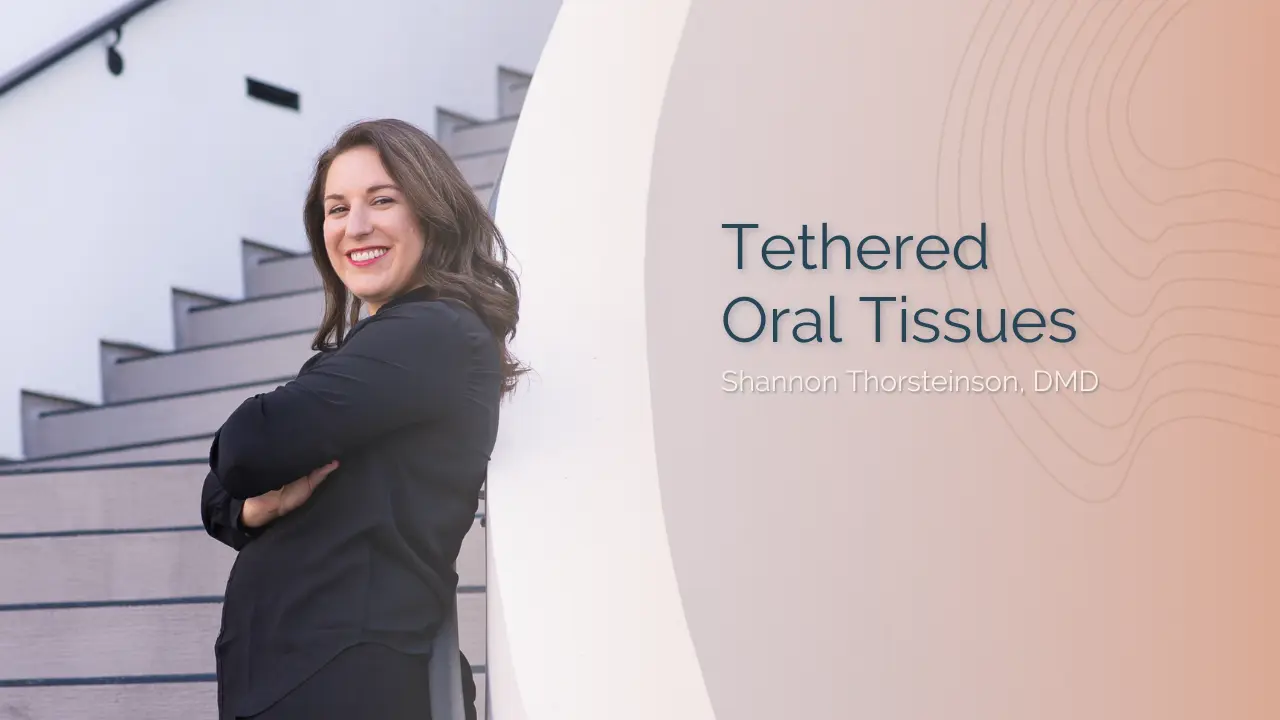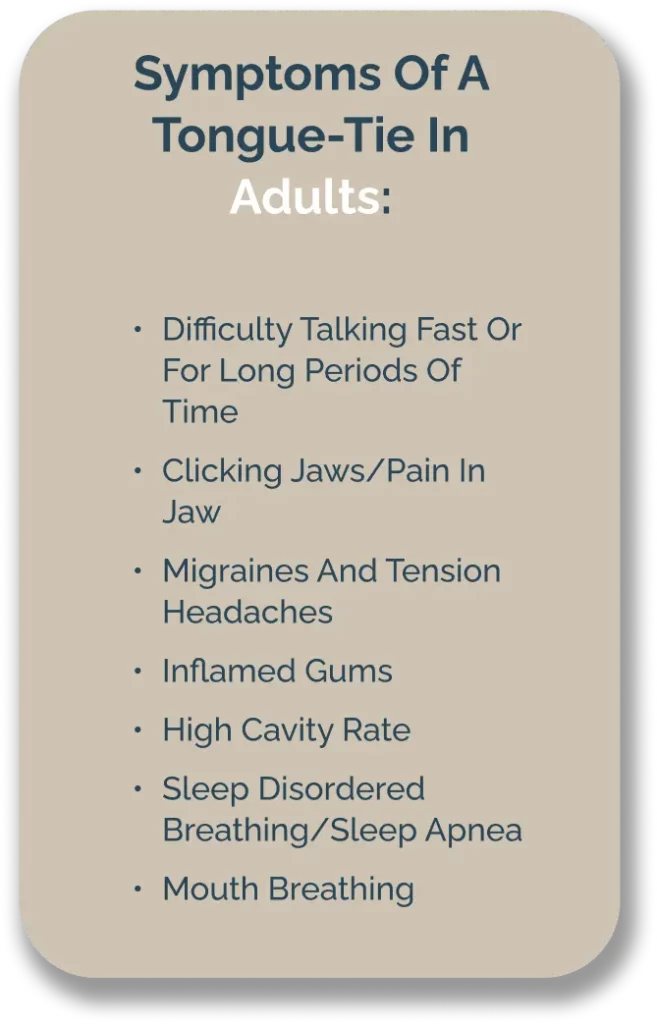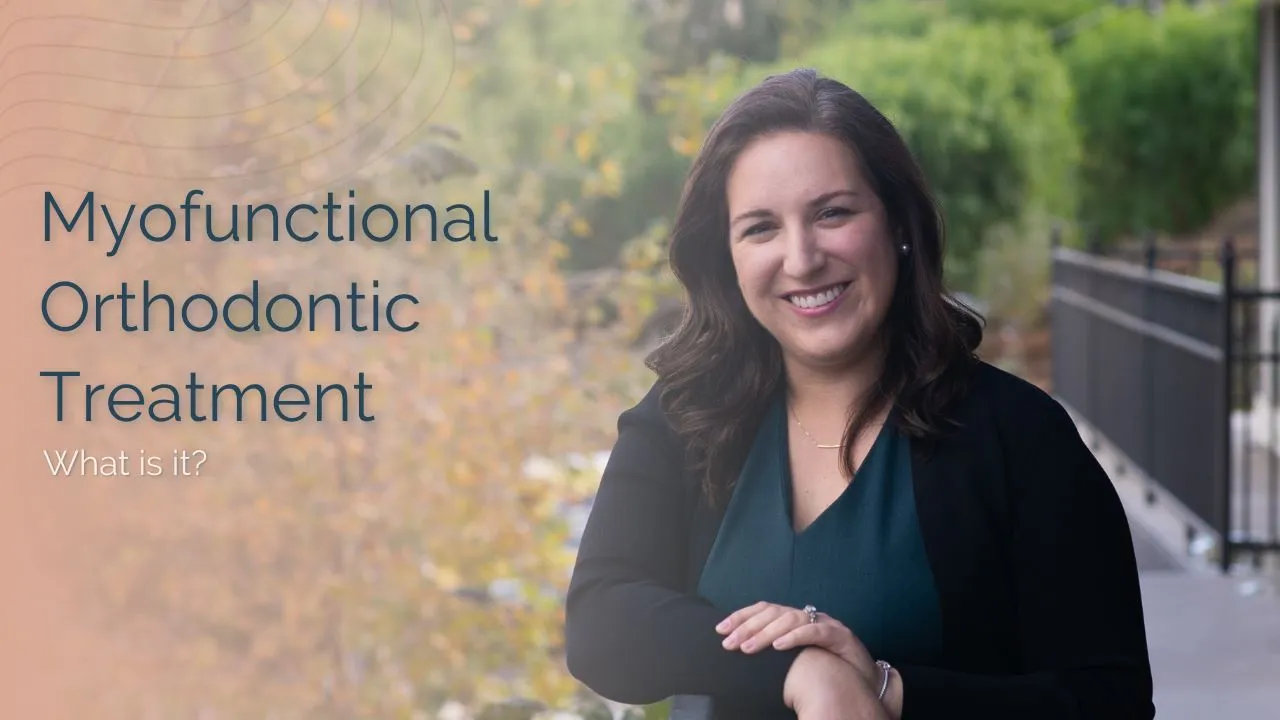LET’S talk ABOUT TONGUE TIES IN ADULTS

WHAT ARE THEY AND WHY SHOULD YOU CARE?

While many times a lingual restriction is identified as an infant or child, adults can still have a tongue tie. In adult patients, we may see signs and symptoms like sleep disordered breathing, dental crowding, teeth grinding, and TMJ issues.
If we suspect a tongue tie, we will recommend an airway workup to evaluate how a tongue tie may be impacting the patient in the context of tongue tone, tongue space and symptoms and sleep.
In adults the procedure to address a tongue tie is called a functional frenuloplasty. This procedure removes restricted oral tissue includes sutures for optimal healing.
By working closely with a myofunctional therapist both before and after a procedure, we can ensure our adult patients’ recovery is as smooth and successful as possible. Myofunctional therapy will help patients improve oral muscle function and flexibility, as well as support lifestyle changes to maintain good oral health.
Most importantly, regardless of what stage or age we meet, there are options for all ages to help patients breathe, sleep, eat, communicate, and thrive.
Tethered Oral Tissues

CONSQEUENCES OF
untreated TONGUE-TIES
- Increased risk of cavities
- Dental crowding, more narrow jaws
- Vertical facial development, leading to a more narrow airway
- Poor sleep quality, which can lead to poor performance in school/sports/behavior
- Speech delays/difficulties
- Mouth breathing
How do we treat children & adults with tethered oral tissues?
Frenuloplasty
A frenuloplasty is a procedure performed to remove large, tight, or poorly positioned band(s) of tissue inside the mouth, connected to the lip, cheeks or floor of the mouth (frenum). Once the tissue has been removed, the area will be sutured. These restrictions are commonly referred to as being “tongue-tied” or “ankyloglossia”, but can be found in cheeks, lips or tongue, and we refer to them as “tethered oral tissues” or TOTs.
This procedure may be performed to improve eating, swallowing, mouth breathing, or myofunctional habits.
Frenuloplasty is a routine procedure and is often performed with just local anesthesia in adults and children.

MYOFUNCTIONAL THERAPY
Myofunctional therapy is an important aspect of both pre- and post-operative care for a functional frenuloplasty procedure. Before the surgery, it helps to prepare the oral and facial muscles for the changes that will occur, reducing the risk of complications and promoting faster recovery. After the procedure, myofunctional therapy helps to retrain the muscles to function in their new, correct position, reducing the risk of relapse and promoting long-term success.
It can help alleviate any discomfort or pain that may occur after the surgery and improve the overall function and appearance of the oral and facial structures. Myofunctional therapy is a critical component of a comprehensive treatment plan for functional frenuloplasty, helping to ensure optimal results and improved oral health.
